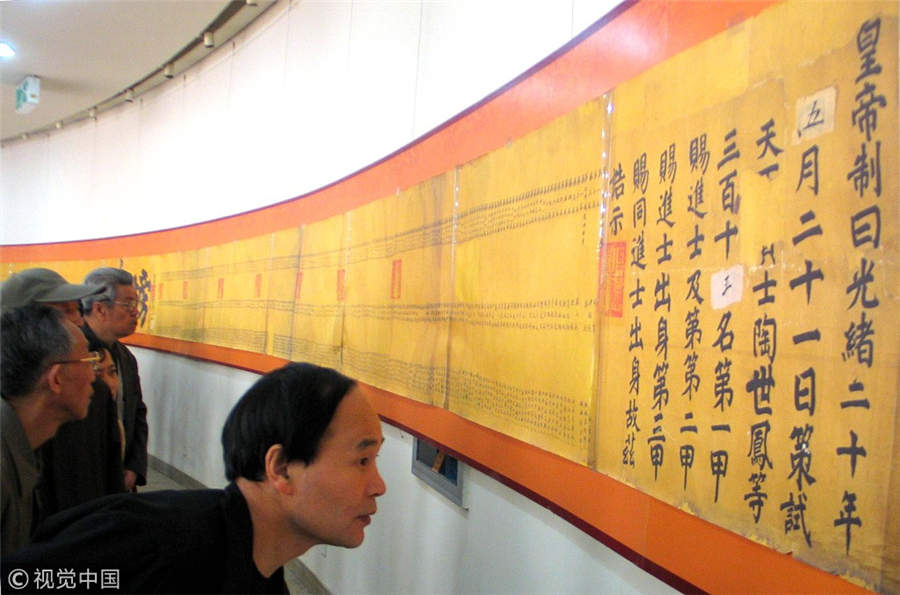Culture Insider: Admission letters in ancient China


What was written on an admission letter?
The ancient admission letter was always written in clerical script (lishu), an archaic style of Chinese calligraphy. The center of the letter showed the examinee's ranking as well as the year and name of the exam.
During the Tang and Song dynasties, the jinhua tiezi would first list the names, titles and personal information of the main officials in charge of the exam and then the name of the examinee.
The jiebao in the Ming and Qing dynasties had simpler content, which just contained the name and ranking of the examinee.
The ancient admission letters also had to be stamped with special seals after being written. In the Qing Dynasty, the list of successful candidates during the dianshi, the top-level exam in keju, would be sealed by the emperor and shown to the public.


















